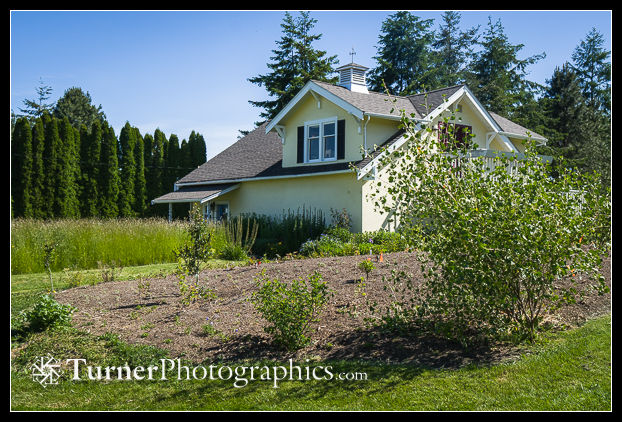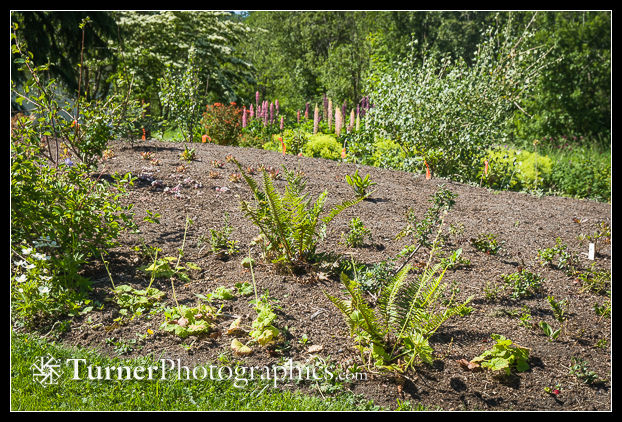Gardening for the Future With Natives
When we moved to our studio property in 2014, we decided we wanted to incorporate many of our wonderful native plants into the garden. Natives are drought-adapted, hosts to native insects that provide food for birds and other animals, relatively low maintenance, and best of all, they’re pretty to look at. When we walk in the woods and see an environment full of plants we’re seeing many years of growth. In a garden setting, starting from scratch, it takes a few years to go from bare soil to lush growth.

Three years in, we’re making slow progress. In some places our new beds are starting to mature and look good. But garden ideas don’t always work as anticipated the first time around.
One of the first places we planted native shrubs and trees, with the idea of creating a new thicket, initially failed. The area slopes down to the road and gets full sun, so we thought it would be perfect for sun-loving shrubs that like good drainage. Our first spring out here we planted mock orange, serviceberry, Douglas’ hawthorn, golden currant, birchleaf spiraea, mountain mahogany, and a grand fir as the centerpiece. They grew nicely at first … until the winter rains returned and we discovered that it puddles at the top of the slope. We killed a lot of plants because the roots rotted in the wet soil.
This spring we started over, beginning by having a dump truck load of soil delivered. We raked and formed this huge pile into a deep layer over the wettest areas and contoured it to blend in where it wasn’t so wet. Then we began planting again.

Our new native shrub and perennial bed doesn’t look like much now; no new garden does. But in about three years we think it will be looking lush and full. We planted a little closer this time and added perennials. We now have 3 small grand firs, expecting to keep only the strongest when they start to get too big. The golden currants are doing well, as are the hawthorns, serviceberries, and a ninebark. We moved the birchleaf spiraea to the dry side of the bed and hope it recovers. No Northwest native garden would be complete without a red-flowering currant or two, so we brought in a couple of rooted hardwood cuttings. I also transplanted some sword ferns, youth-on-age, and fringecup from our woods, along with two species of currants.

For perennials and groundcovers we’ve planted a “stream” of penstemon and masses of Oregon sunshine, lingonberries, beach strawberry, sedum, and Scotch bluebells. Natalie tucked in a few seedling fawn lilies, collected from her mother’s garden. All of these look tiny right now, reminding us that gardening is an activity for the patient. Many of the perennials are seedlings that we transplanted from other garden beds on our property. We certainly couldn’t have afforded to go out and purchase as many plants as we put in the ground.
Although everything we planted is native to the Pacific Northwest, and drought-tolerant, for the first couple of years we’ll need to water so roots get well established. I’m sure there will be weeds to pull, too. But once our new plantings are growing nicely we won’t need to put in much labor to keep this garden bed looking good.

